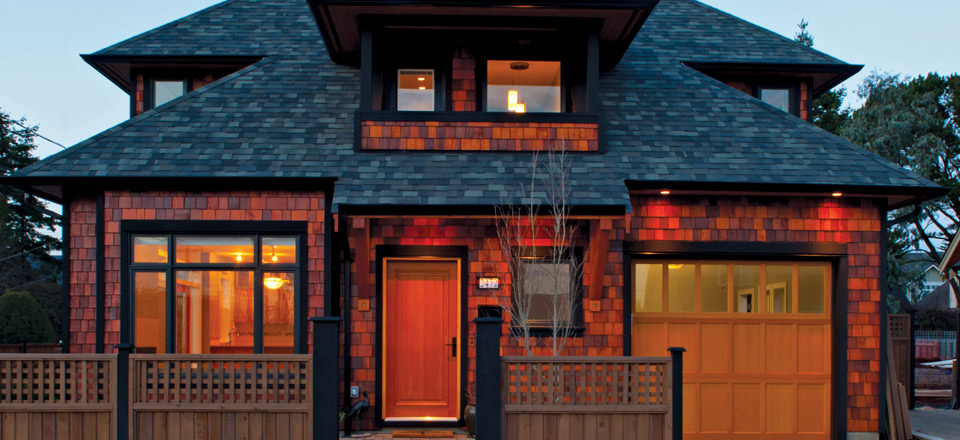– story by Barry Mathias, photography by nuttycake.com –
Seaside Investigates Peninsula Housing Challenges and Solutions …
International housing affordability survey ‘Demographia – 2015’ rated the Greater Victoria region as the second most expensive place to live in Canada. Housing was certainly on the agenda for many at recent local elections. We asked writer Barry Mathias to investigate the challenges, and solutions that affect our market here on the Peninsula. The first report in the series looks at the Town of Sidney.
For the majority of people their home is one of the most important elements in their life. Finding a job and linking it with a suitable place to live are major steps. The provision of homes, from single family dwellings to town houses, and from apartments to micro units is a part of the complex mix that forms a community. Meeting this demand requires careful planning and flexible thinking on the part of each of the three local municipalities as they strive to encourage development and still preserve the environment and the local ‘atmosphere’.
Councillor Steve Price, the recently elected Mayor of Sidney, was enthusiastic about recent trends in the provision of housing in the municipality. “We are allowing legal secondary suites throughout the town,” he said, and although no developer was proposing to build any large rental accommodation, he was pleased to see the extra density being fitted into new condo developments. He referred to the condominium complex built by Steve Wakefield Construction near Fairway Market: “the four micro units sold immediately.” He revealed that the same company was presenting plans for a 24 unit building at 5th and Bevan of which eight would be micro units of 350-450 square feet. “I’m encouraging this development,” he said.
The Mayor made the point that while micro units might sell for about $169,000, retirees from Oak Bay might pay $800,000 for a large unit in the same development. He said he was “pleased with the amenities we are able to offer.”
The economic downturn of 2008 seriously affected Sidney’s gradual expansion. “At the start of that year we were involved in designing a variety of apartments, senior housing and town houses,” said Silvia Bonet, a partner in the firm of Finlayson Bonet Architecture. “Then, housing development stopped.” By 2010, they had completed their on-going residential projects and were dealing, almost entirely, with commercial and industrial developments.
Until the last two years, Bonet revealed, there have been a number ‘of factors that have affected housing development; these included the high cost of land, planning restrictions on increased density, and a lack of incentives for developers. Until all of these factors came together in a positive way, development was stalled. “Just over a year ago, big changes occurred,” Bonet said. From 2006 – 2012 Sidney Council operated what was known as ‘bonus density’, whereby developers who wanted to include more units in their developments were charged on the profits they were likely to make and the money went towards supplying more amenities. But, as Bonet explained, “the profits for a developer were in those extra units.” The charges were a disincentive for developers.
“Two years ago changes were made, enabling developers to pay a fixed amount for each unit, amounting to about $5,000, which is used for the provision of amenities.” This certainty encouraged developers who could incorporate these known charges into their costs; the extra amenities attracted amenities attracted first-time buyers, “resulting in a considerable change in the demographics,” Bonet said. “We are now involved with three developments aimed at providing multi-family residences. These provide a wide range of homes from 400 square foot micro units to 2,000 square foot accommodations.”
“2007 was the high point of house sales in this area,” said Patrick Schorle, owner of the reality company Schorle Associates, “and at that time we were selling between 23 – 27 percent of our active ratings. In 2008 it crashed to seven percent.” He revealed that in the last few years, sales have stabilized and there are signs of a recovery, but “we are waiting to see how the lower oil prices will impact buying power in 2015.”
He said there were definitely some opportunities for people to invest in property, but plenty of research was needed. Although there was a slight slippage in some housing prices, short-term investment was risky.
Schorle referred to the high prices in Greater Victoria and the Peninsula, which curb first time buyers who often rely on parents to be able afford the cost: “Single family homes are selling for between $400,000 and $450,000.” He indicated there was a shortage of new development aimed at single people or young married couples, “for them, the best deal might be to buy an older house in need of improvement.”
In contrast to the fluctuations felt by realtors and architects, Steve Wakefield of Steve Wakefield Construction did not experience much change. “2014 was much the same for me as previous years. I am a local builder, and I concentrate on building in the centre of the town,” he said. A good example of how a reliable reputation can protect you in difficult times.
Alison Verhagen, Manager of Planning for the Sidney Municipality, was helpful in providing statistics. “In the past ten years housing development has taken a range of forms,” she said. “From 2005 – 2014 building permits have been issued for 97 new single family dwellings; 26 new two-family dwellings (i.e: 52 units); 240 new multi-family dwelling units (townhouses, apartments and condominiums), and 59 conversions from single-family homes to two-family dwellings or the addition of secondary suites to single family dwellings – 27 in the last four years.”
“Because of land costs and the fact that many people are downsizing and wanting smaller units, there is a move to smaller residential units in new developments”. Verhagen said. She was philosophical about planning. “There are, and likely always will be, members of the community who welcome change, and others who are resistant to it, however, communities do evolve over time.” She said that development projects reflect the demands of the market, “we endeavor to allow options in Sidney’s bylaws to encourage a variety of housing in Sidney.”
“The Town has a limited footprint,” said Bonet. If it is to grow and still retain its attraction to people of a variety of ages and incomes, then the increase in density must occur in appropriate areas. “This is a municipality with a large group of retirees; we need more young people and we need to provide more housing options and amenities, such as day care; it has to be a holistic approach.”
There has been a rapid expansion in employment opportunities on the industrial estate around the airport, and this has created a further need for housing. Viking Air, with over 500 employees, is a good example. “75 percent of our employees live outside the Sidney/North Saanich zone,” said Robin Ambrose, the Director of Human Resources. “Some travel daily from Duncan and Sooke, but given the chance, they would prefer to live in Sidney. Recently, a female employee finally found an affordable house after searching for five years!” But, Ambrose had good things to say about Sidney Town Council: “They are very open minded and progressive.”
Paul Macris of Holmes Reality summed it up: “There is a recognition now that a certain sector of the market doesn’t need an enormous house or condo to satisfy its needs and wants.”
Most think that Sidney is approaching its housing provision in a realistic, enlightened and sensitive way: seeking to encourage new, and perhaps smaller, developments, while maintaining its reputation as an attractive and thriving town.




